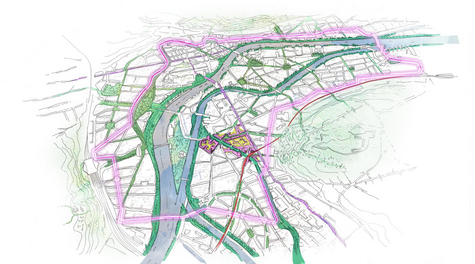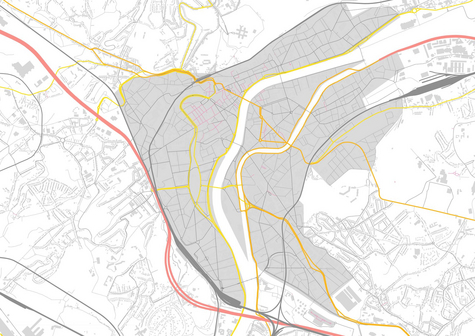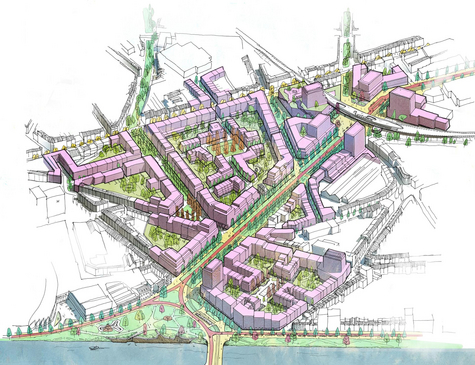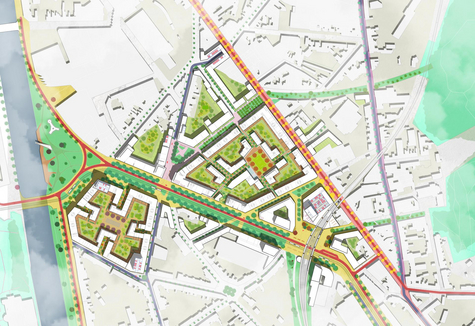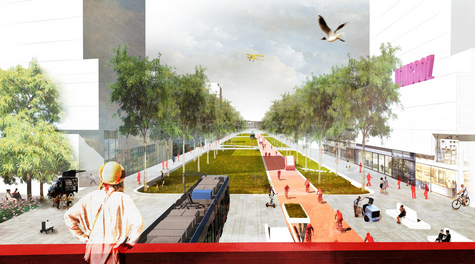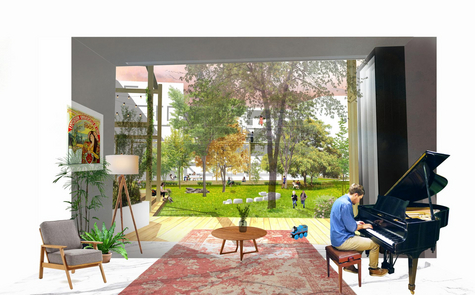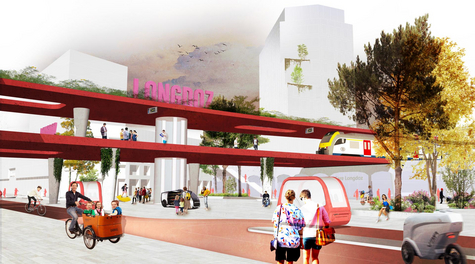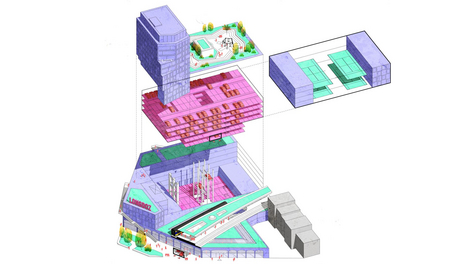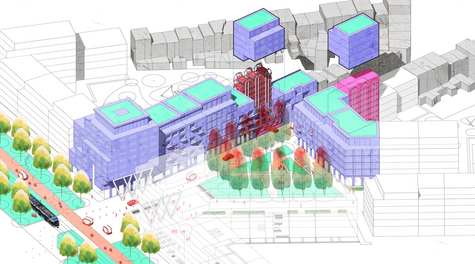Tom Lodder
Lovely Liège
Towards a post-car city
WHY? (ADAPT)
The city of Liège is suffocating because of extreme car hospitality. Public space has been stripped down to traffic space, serving the singular purpose of moving and parking polluting, dangerous and space inefficient cars. Global challenges concerning pandemics, climate change and sub-urbanization can no longer be denied their spatial claim within the city. The question becomes how to combine these new claims within a resilient and multifunctional public space? Belgium is trying to battle urban sprawl and the ongoing consumption of its landscape. Opposing low density and fully car dependent ribbon developments makes the transformation and adaptation of Liège into an attractive, denser and greener city a necessity, ensuring a resilient and sustainable future.
CITY AGENDA (AMAZE)
Liège will be introduced to a radical new mobility system, allowing for a solid green-blue framework, covering the whole city. Therefore, trough- and non-local traffic will be diverted around the city, restoring the city’s waterfront as public space and its relation with the Meuse. The green-blue framework ensures that green space is within at least 3 minutes walking distance of every inhabitant. A car free valley pushes trough motorized traffic outwards from the urban core maintaining a maximum speed of 30 km/h. Pedestrians, instead of private cars, have priority within this area. A network of slowlanes is provided to facilitate cycling, light electrical vehicles and even the allowance of autonomous city pods. Collective mobility hubs are within 300 meters distance of every inhabitant. By implementing the car-free valley, comparable or even better qualities concerning both real estate and public space will be created in order to compete with Belgiums urban sprawl.
RIBBON QUALITY - URBAN TYPOLOGY (ATTRACT)
The cluttered Longdoz city district will be transformed into a dense and attractive urban neighbourhood by adding a variety of much needed green public spaces. The N30 city motorway will be transformed into a green boulevard, leaving cars underground and solving the missing green link between Parc de la Boverie and Parc de la Chartreuse as a continuous gateway to the outdoors. A new Longdoz trainstation and a new tramline, connecting Angleur via Longdoz with the city center will serve as the catalyst to transform the former industrial sites along the N30 road into green and dense city districts. Two variations of a newly introduced Longdoz superblock present how suburban ribbon qualities can be stacked into urban solutions, providing intimate private gardens and spacious collective climate courtyards within the city, giving sub-urbanites a run for their money and restoring the Belgian landscape.
Afstudeerdatum: 25 augustus 2021
Afstudeercommissie: Jaap Brouwer (mentor), Jerryt Krombeen, John Westrik
Toegevoegde leden t.b.v. het examen: Herman Zonderland, Hein Coumou

